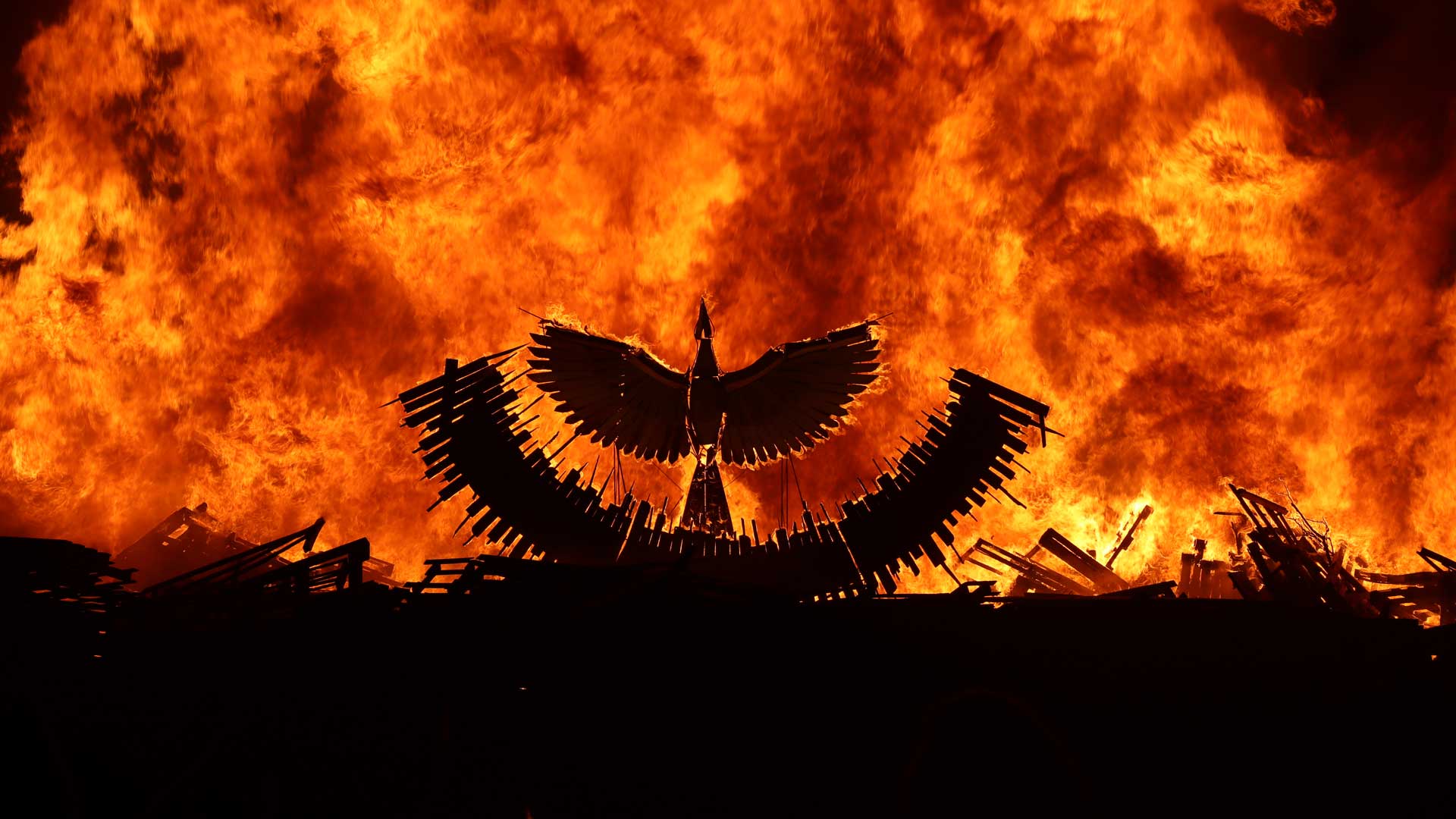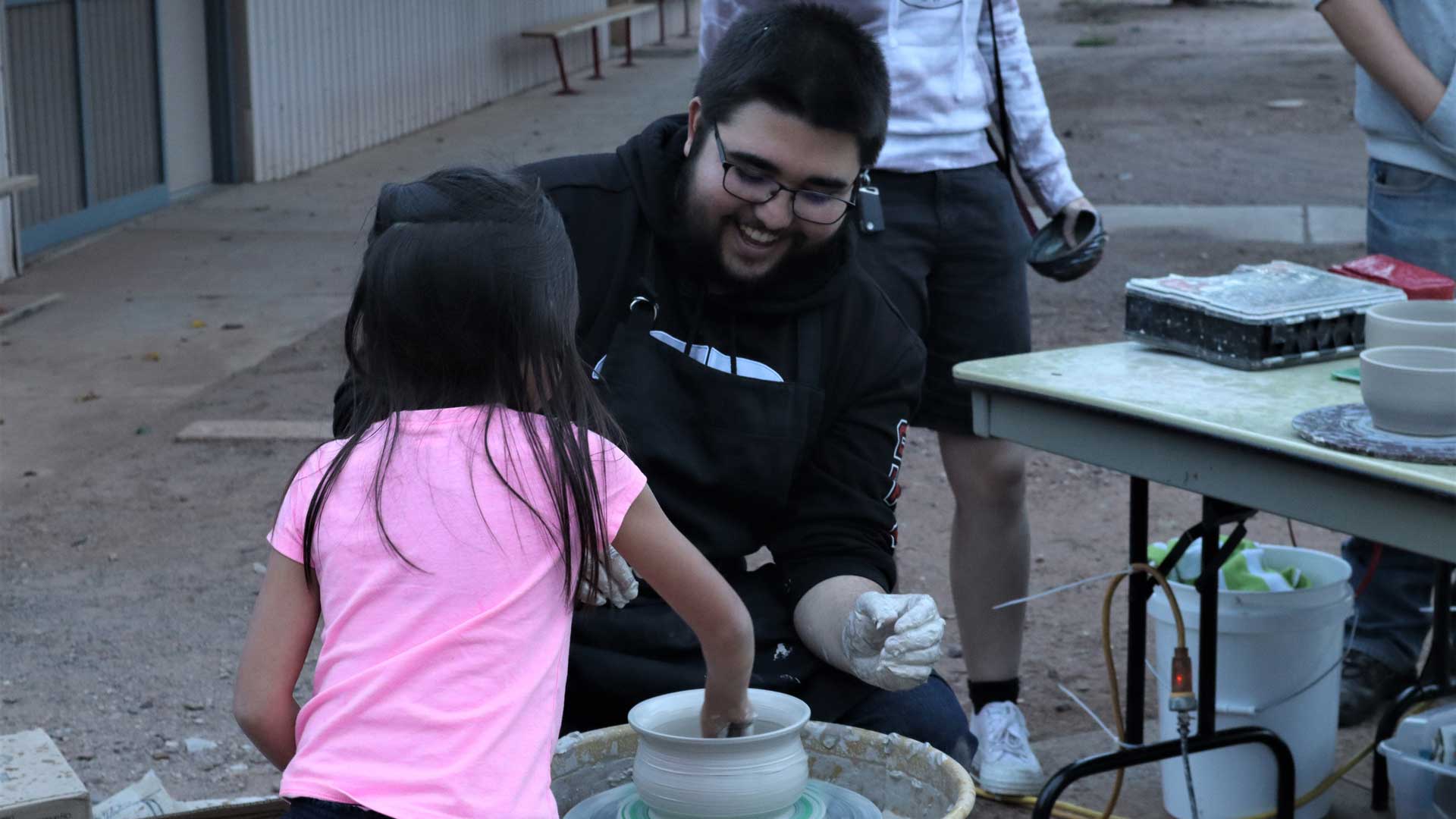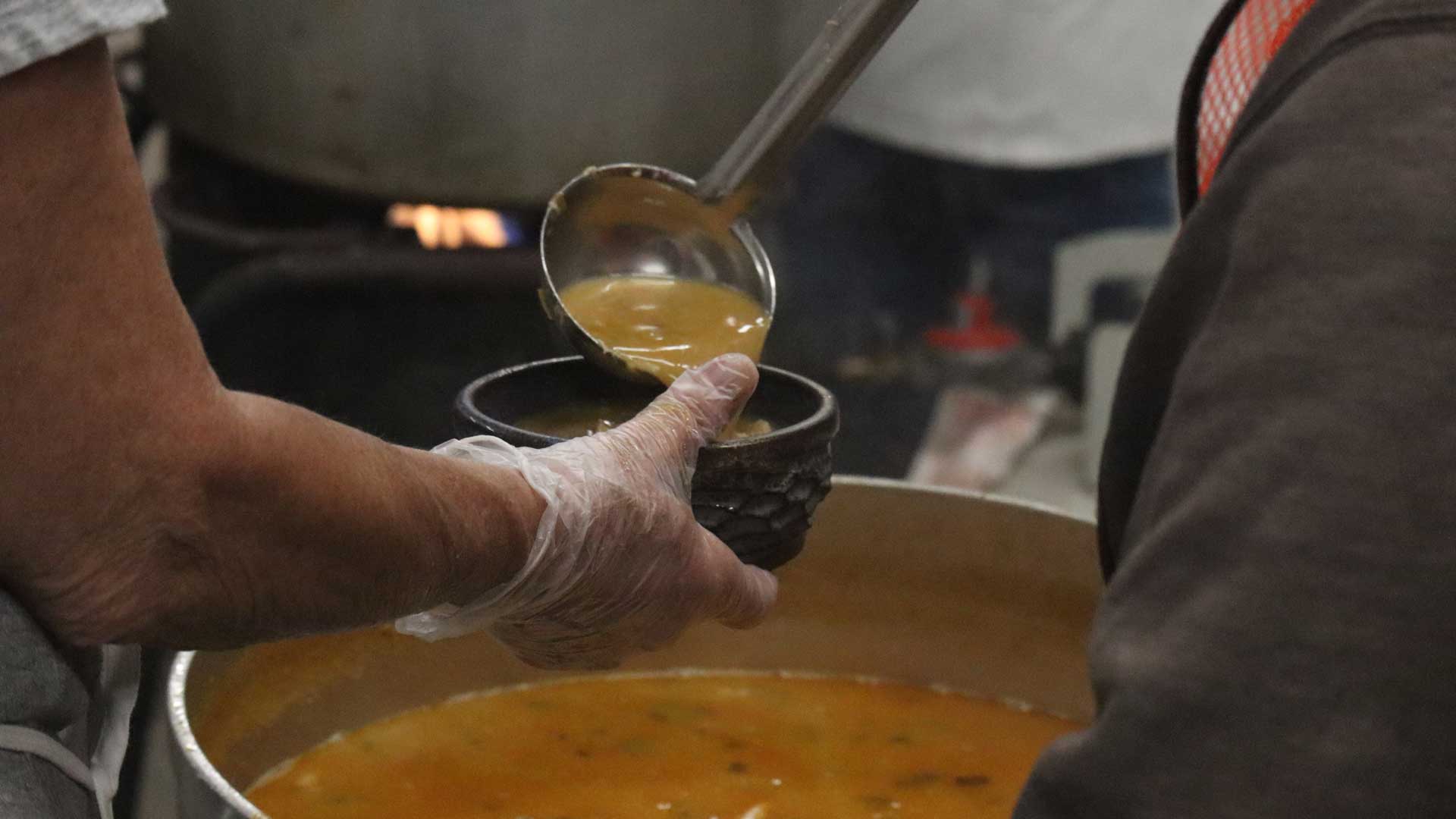 Pitfire at Cochise College 2022
Pitfire at Cochise College 2022
Bowls, fire, community: it’s a link to the primitive instinct of gathering together to share in nourishment and warmth as the weather turns its tide from summer to autumn.
The annual Cochise College Pit Fire illuminates the vast Cochise County skies with its celebration of fire, art, and community. Every year, the college hosts the event, free of charge and open to the public, and calls on a local ceramic artist to make 1,000 bowls that can be purchased and filled with soup courtesy of the college’s Culinary Arts students.
“So after it gets bone dry, we stick it in the kiln and it gets fired and it becomes bisqueware,” said Hunter Shojinaga, this year’s potter who made 1,000 bowls for the event. “Then, it will sound like you’re flicking glass. After that, we dunk it in, like, glazes and stuff. So you just put it upside down, dip it in.”
“I used two different glazes for each,” he continued. “And then, we stick them in the kiln and it gets fired.”
 Hunter Shojinaga made the 1,000 bowls for Pitfire 2022.
Hunter Shojinaga made the 1,000 bowls for Pitfire 2022.
Each potter who takes on the challenge of making 1,000 bowls for the Pitfire event shows off their unique style. Shojinaga, who’s also a student at Cochise College, said that he chose to spin the bowls on the pottery wheel and carve them with a technique called sgraffito, where one carves the air-dried piece with a hand carving tool.
“I really love texture on pieces because I like holding it and being able to, you know, feel texture,” said Shojinaga. “I'm also all about functionality over, like, abstract pieces. If it doesn't — if you can't really use it just don't see a reason why I would create it.”
While the Pitfire itself is a crowd-pleaser, it also serves a purpose in firing the bowls. Cochise College Art Instructor Tate Rich said it’s a method that’s tens and thousands of years old.
“The Pitfire has been going on for 10s and 1,000s of years, and it’s one of the most primitive ways to be able to vitrify clay, where you can take mud and a certain amount of heat and transform it into a stone, into a vessel,” said Rich. “What’s really amazing about this area in Cochise County is that we have one of the highest conglomerations of pit-fired work known as pre-Columbian ceramics in the United States.”
Firefighters from Sunnyside Fire Department, Pirtleville Fire Department, San Jose Fire Department, and Douglas Fire Department were present to maintain the fire’s luster and the public’s safety. Local artists regularly set up booths to share their work.
“And for the first few years that I taught here, we invited a group of artists from Mata Ortiz to come up and they did demonstrations, and all of their work is pit-fire,” said Rich. “And over a few years, our bonfire with all the pots just seemed to grow with the community.”
With the purchase of a $10 bowl thrown by Shojinaga, the college’s culinary students prepare several soups for the public to indulge in.
 Soup is served in the bowls made for the festival.
Soup is served in the bowls made for the festival.
“In essence, there's a thousand of us that all get to eat out of similar bowls, you know, to share that nutrition,” Rich said. “And you know, what a bowl and a piece of ceramics has to offer is really incredible.”
While admission is free, the college encourages attendees to bring non-perishable foods to their community food bank, Cochise Cupboard Food Pantry.
For Shojinaga, playing such a pivotal role in the event has notable gravitas but also joy.
“It means a lot,” said Shojinaga. “It's really daunting, it's very heavy, you know, sometimes to think about like a big contribution to what's going to be the Pitfire. But at the same time, I sort of love it because I don't know. I like attention I guess. But, just being able to be a part of something that I've been visiting for a lot of years now is since I've been coming to the college, I've always loved the Pitfire. I've always loved getting the bowls, I’d buy one every year.”

By submitting your comments, you hereby give AZPM the right to post your comments and potentially use them in any other form of media operated by this institution.